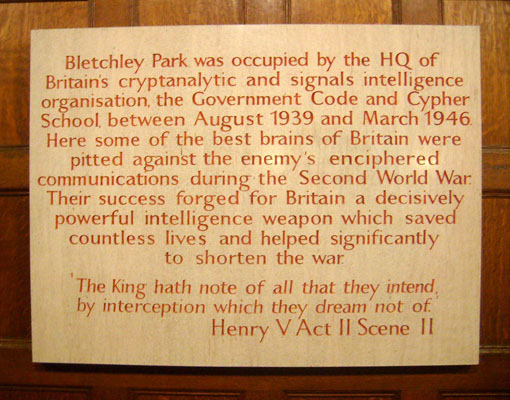columns OK / evised 27 August 2013
columns OK / evised 27 August 2013
|
Collections
in Cryptology - Cuban Numbers Stations |
|||||||||||||||||||||||||||||||||||||||||||||||||||||||||||||||||||||||||||||||||||||||||||||||||||||||||||||||||||||||||||||||||||||||||||||||||||||||
|
A Preliminary analysis of Cuban Numbers |
|||||||||||||||||||||||||||||||||||||||||||||||||||||||||||||||||||||||||||||||||||||||||||||||||||||||||||||||||||||||||||||||||||||||||||||||||||||||
Cuban Espionage in the US |
|||||||||||||||||||||||||||||||||||||||||||||||||||||||||||||||||||||||||||||||||||||||||||||||||||||||||||||||||||||||||||||||||||||||||||||||||||||||
Some Relevant Links: Enigma2000 Spooks Conet Project Ben Mesander's web pages. Dirk Rijmenants's web pages. |
|||||||||||||||||||||||||||||||||||||||||||||||||||||||||||||||||||||||||||||||||||||||||||||||||||||||||||||||||||||||||||||||||||||||||||||||||||||||
|
A Straddling Checkerboard Cipher
The straddling checkerboard is built from several elements: The keyword "ATILNES" indicates that there are 7 columns in the checkerboard, and thus 4 rows, accommodating up to 28 letters. Encryption procedes letter by letter by giving the numerical coordinates of the row and column. If the letter appears in the first row, with the empty row index, then only the column index is used, a single digit. If the letter appears in any other row, then the two-digit coordinate is used. For example, to encode "Ana Belen Montes" one writes "40424 17105 35756 318". Decryption procedes numeral by numeral interpreted as the row and column index of the cleartext letter. Any occurrence of a 2, 5, or 9 requires a 4, 3, 6, 7, 0, 1 or 8 following it and is a double-digit representation. Any occurrence of a 4, 3, 6, 7, 0, 1 or 8 which is NOT preced by a 2, 5, or 9 refers to the first row and is a single-digit representation. For example, when one decodes "40424 17105 35756 318," one arrives at "Ana Belen Montes." Cryptanalysis: A statistical "in-context" analysis of both single-digit and double-digit neighborhoods and frequencies would reveal the row and column indices and the dimensional shape of the table and the codes for the most common letters. Apparently the One-Time-Pad (OTP) provides the security and the Straddling Checkerboard provides the conversion from numbers to plain text. But why do this on paper when the computer, which presumably does the OTP processing, could easily do the conversion? |
|||||||||||||||||||||||||||||||||||||||||||||||||||||||||||||||||||||||||||||||||||||||||||||||||||||||||||||||||||||||||||||||||||||||||||||||||||||||
|
 The stone panel at the Mansion in Bletchley Park, UK (photo courtesy of John Thrower). Note the Shakespearian quote which was also posted by Ana Montes in her cubicle. |
||||||||||||||||||||||||||||||||||||||||||||||||||||||||||||||||||||||||||||||||||||||||||||||||||||||||||||||||||||||||||||||||||||||||||||||||||||||
Some Cuban Numbers Stations Schedules Courtesy of Dennis Kent |
|||||||||||||||||||||||||||||||||||||||||||||||||||||||||||||||||||||||||||||||||||||||||||||||||||||||||||||||||||||||||||||||||||||||||||||||||||||||
|
Times are Coordinated Universal Time, e.g. "0300z". The Format is: 24/Aug 0300z 6855kHz AM V2a SSYL atencion: 42732 32051 16521
22/Aug 0200z 5762kHz AM V2a SSYL atencion: 64781 51652 85802 21/Aug 0700z 5883kHz AM V2a SSYL atencion: 51372 01461 38251 20/Aug 0700z 5883kHz AM V2a SSYL atencion: 38252 70862 74252 19/Aug 0900z 9063kHz AM V2a SSYL atencion: 34071 81721 47131 17/Aug 0300z 5800kHz AM V2a SSYL atencion: ..... 68281 ..... caught late 16/Aug 0700z 6933kHz AM V2a SSYL atencion: 38082 04761 01201 Spynumbers, Numbers Database Search for June, July, August 2010 |
|||||||||||||||||||||||||||||||||||||||||||||||||||||||||||||||||||||||||||||||||||||||||||||||||||||||||||||||||||||||||||||||||||||||||||||||||||||||
A Cuban "Blooper" Recording courtesy of Jon Garner: |
|||||||||||||||||||||||||||||||||||||||||||||||||||||||||||||||||||||||||||||||||||||||||||||||||||||||||||||||||||||||||||||||||||||||||||||||||||||||
|
Transcript of his recording: The following .wav file has been edited. Fade-outs and fade-ins idicate the deletions.
Anatomy of a broadcast of three messages (apparently with someone asleep at the transmitter):
Callout 63000: Callout 63000: |
|||||||||||||||||||||||||||||||||||||||||||||||||||||||||||||||||||||||||||||||||||||||||||||||||||||||||||||||||||||||||||||||||||||||||||||||||||||||
|
Occurrence of broadcasts according to time-of-day based upon data provided by Dennis Kent.
|
|||||||||||||||||||||||||||||||||||||||||||||||||||||||||||||||||||||||||||||||||||||||||||||||||||||||||||||||||||||||||||||||||||||||||||||||||||||||
|
Occurrence of broadcast frequencies (overall and by day) based upon data provided by Dennis Kent.
|
|||||||||||||||||||||||||||||||||||||||||||||||||||||||||||||||||||||||||||||||||||||||||||||||||||||||||||||||||||||||||||||||||||||||||||||||||||||||
Analyses based callouts recorded over one year, from data provided by Dennis Kent. Occurrence of Numerals in a Five-Digit Callout.
Table of the occurrence of consecutive callout numbers. Histogram of the occurrence of consecutive callout numbers.
Dates on which the most frequent callouts (38051, 38052 and 38053) were broadcast.
Histograms of the occurrence of different callout numbers.
|
|||||||||||||||||||||||||||||||||||||||||||||||||||||||||||||||||||||||||||||||||||||||||||||||||||||||||||||||||||||||||||||||||||||||||||||||||||||||